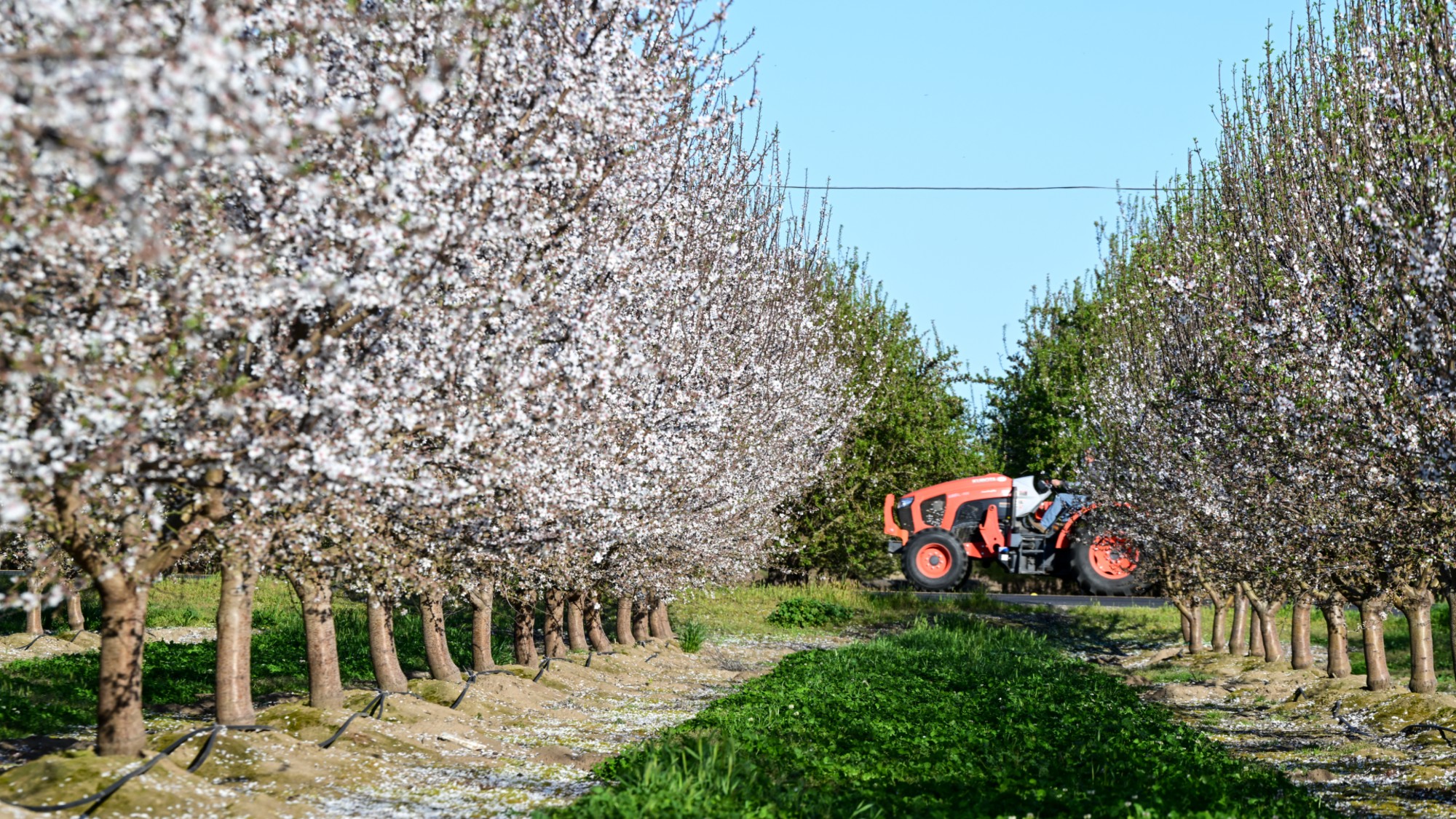Science
Rat Infestation Threatens California’s Almond Industry with $311M Losses

A severe rat infestation is posing a significant threat to California’s almond industry, with potential losses estimated between $109 million and $311 million due to damage to crops and farming equipment. The infestation, primarily affecting the Central Valley, has been linked to an alarming spike in roof rat populations, which are using irrigation canals and other waterways to spread rapidly between orchards.
According to the Almond Board of California, almond growers are facing an unprecedented challenge this season. The board noted that farmers have reported a drastic increase in rodent populations, leading to concerns about the long-term viability of almond production in the region. As California produces 80% of the world’s commercially grown almonds, the implications of this infestation extend beyond local farms, potentially impacting global supply.
Nature of the Infestation
Roof rats, commonly known as black rats, are particularly problematic due to their arboreal nature, often constructing nests in trees. Over recent years, researchers have observed a shift in behavior, with these rats increasingly using burrows in almond orchards and other tree nut farms. The reasons behind this sudden interest in nut trees remain unclear, according to reports from USA Today.
The infestation has already impacted more than 100,000 acres of almond orchards. Growers are reporting significant yield losses, with some stating they are exterminating between 50 and 100 rats daily. Roger Isom, chief executive of the Western Tree Nut Association, commented on the situation, stating that California farmers have never encountered such a severe rat problem in almond production, making it difficult to implement effective preventative measures.
Strategies for Control
In response to the infestation, California almond farmers are employing various strategies to combat the rat population. These include the use of bait stations and aluminum phosphide treatments in burrows during winter months, complemented by snap traps, owl boxes, and fumigation through carbon monoxide applications in warmer months.
Despite these efforts, farmers face challenges as these methods can be labor-intensive and costly. Experts recommend that growers first track rodent activity and utilize game cameras to identify hotspots before deploying traps. Fresh bait should be available for at least four weeks to maximize effectiveness.
Despite the proactive measures, many farmers remain concerned that current strategies may not suffice. Isom noted, “We’ve never seen anything like this. I’ve had growers who have lost more than half their yield.” The full extent of the damage will only be known after this year’s harvest, as growers hope to separate weather-related losses from those caused by the infestation.
With the almond industry facing such unprecedented challenges, stakeholders are increasingly aware that swift and effective action is crucial to prevent the situation from escalating further. The future of California’s almond production hangs in the balance as farmers continue to grapple with this troubling development.
-

 Technology5 months ago
Technology5 months agoDiscover the Top 10 Calorie Counting Apps of 2025
-

 Health3 months ago
Health3 months agoBella Hadid Shares Health Update After Treatment for Lyme Disease
-

 Health3 months ago
Health3 months agoErin Bates Shares Recovery Update Following Sepsis Complications
-

 Technology4 months ago
Technology4 months agoDiscover How to Reverse Image Search Using ChatGPT Effortlessly
-

 Technology1 month ago
Technology1 month agoDiscover 2025’s Top GPUs for Exceptional 4K Gaming Performance
-

 Technology3 months ago
Technology3 months agoElectric Moto Influencer Surronster Arrested in Tijuana
-

 Technology6 days ago
Technology6 days agoOpenAI to Implement Age Verification for ChatGPT by December 2025
-

 Technology5 months ago
Technology5 months agoMeta Initiates $60B AI Data Center Expansion, Starting in Ohio
-

 Technology5 months ago
Technology5 months agoRecovering a Suspended TikTok Account: A Step-by-Step Guide
-

 Health5 months ago
Health5 months agoTested: Rab Firewall Mountain Jacket Survives Harsh Conditions
-

 Health3 months ago
Health3 months agoAnalysts Project Stronger Growth for Apple’s iPhone 17 Lineup
-

 Lifestyle5 months ago
Lifestyle5 months agoBelton Family Reunites After Daughter Survives Hill Country Floods





















